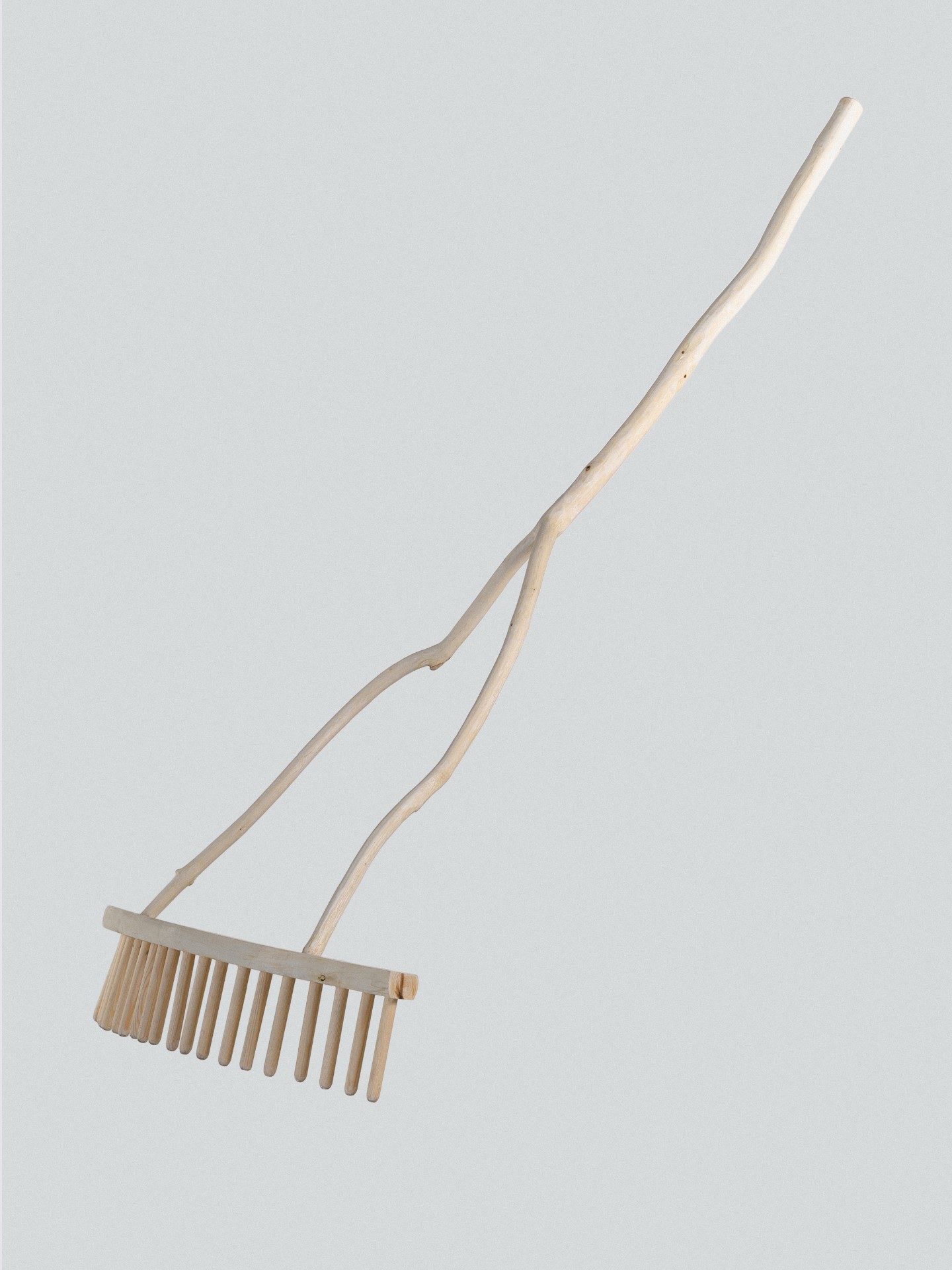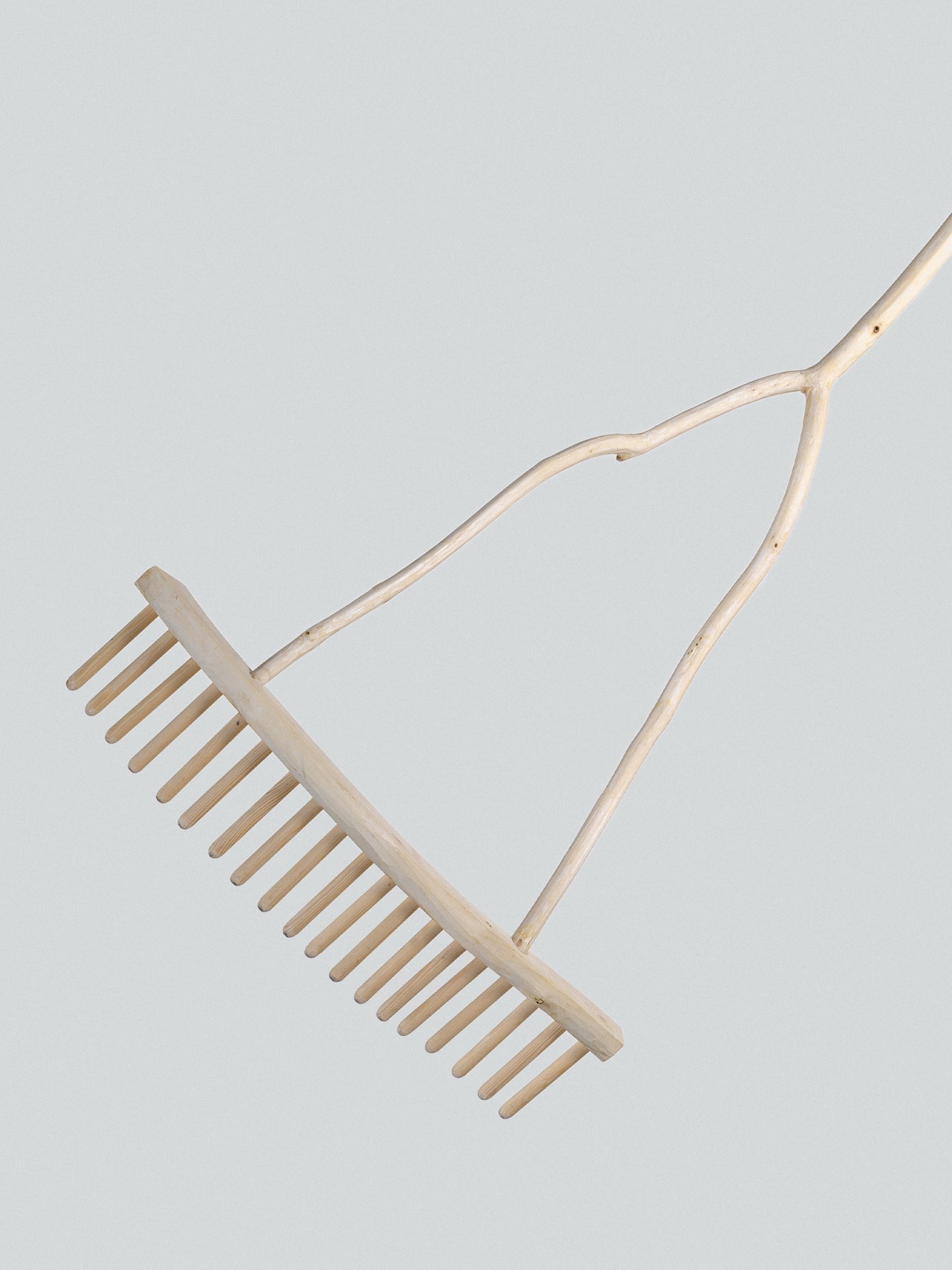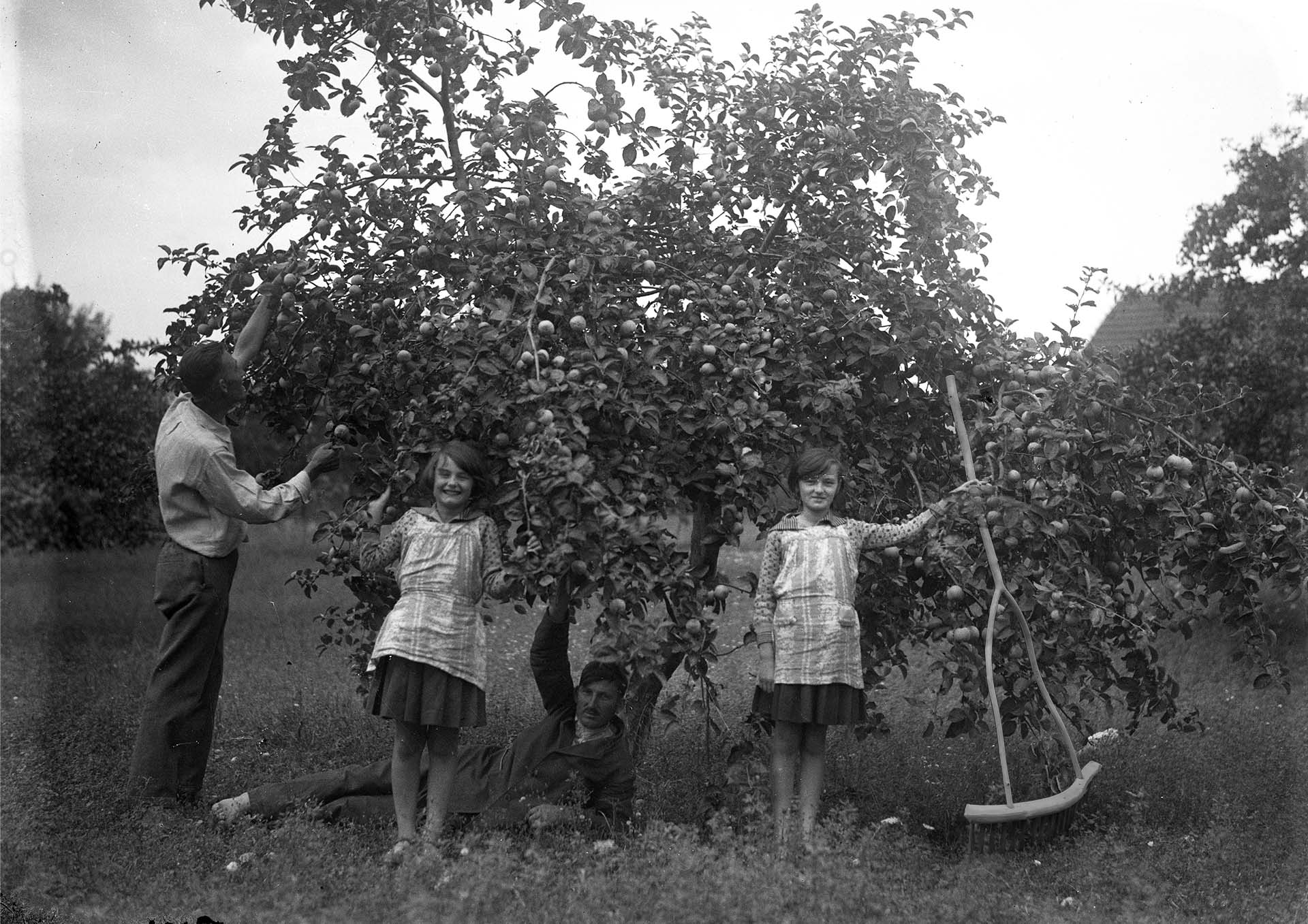A “chidder-puller” is a hand tool in agriculture to garner ripe, fallen fruit from the ground. This method is used to protect the harvest from pests. These are overripe, damaged or low-quality fruits which are not suitable for long-term storage nor raw consumption and are most often used for the production of fruit pálinka (schnapps). In Hungary, this raw material is known as chidder.
The rake used to collect the fruit is a traditional farming tool, usually made from hardwood, acacia or ash. The traits that make the “chidder-puller” different from an ordinary rake are the size and shape of the head and teeth and the method of use. The shape is similar to that of the hay rake used in haymaking, but the head is much larger and wider to collect the fruit as it is pulled, and the teeth are longer than those of the ordinary rake. The head is 60 to 70 cm long, made of hardwood, and usually has dense teeth to be able to pull smaller grains. Its teeth, 10-14 cm long, are attached to the bore in the rake's head every 2 cm. The number of teeth varies from 18 to 24 depending on the region. The teeth have a circular cross-section, this way they roll the fallen fruit in front of them and, due to their material, do not damage the surface of the overripe fruit. Their ends are rounded to prevent them from sticking to the ground and to enable them to be pulled over the surface. The attachment of the 180 cm long handles also shows many regional variations. Handle shapes include: single, bifurcated, naturally forked.
The “chider-puller” is originally a female instrument. In many regions the bachelors made them for their chosen woman. The pieces with the most elaborate carvings and inscriptions were found in Transylvania and Kalotaszeg. At the turn of the last century, its use was still widespread in the central regions of the Great Hungarian Plain.


